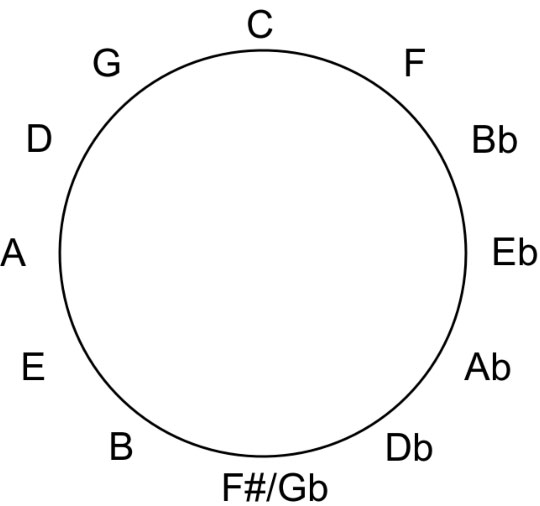CHORDAL SCALE for C: C Dm Em F G7 Am Bmb5 C
Triad Stacks:
Play in eighth note triplets, yielding two measures: / = bar line
G7 (V chord): G Bmb5 Dm F / Am C Em G
D- (ii chord): Dm F Am C / Em G Bmb5 Dm
C (I chord): C Em G Bmb5 / Dm F Am C
Notes and Hints:
The triads triads alternate between Major and minor with one exception: the mb5 chord is followed by a minor triad.
The D- stack may be played over a G7 chord.
All three stacks contain the same triads; the only difference is their order.
(You may stack triads over the other chords in the chordal scale too.)
Think of each stack as having two parts, one measure each. The ROOTS of the triads in the first measure spell the arpeggio of the chord you start on (G7, D-, and CM7 respectively in this example.) The ROOTS of the triads in the second measure spell out the minor 7 chord one whole step (two frets) up. (G7 and A-; D- and E-; CM7 and D-). This will become more important later.
Thus for G7: G Bmb5 Dm F (=G7) / Am C Em G (=A-)
(If it doesn’t help you to think about it that way, then don’t!)
Triads are easy to write on a musical staff: they occupy three consecutive lines or three consecutive spaces.

